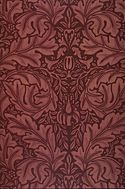
Velvet is a type of woven fabric with a dense, even pile that gives it a distinctive soft feel. By extension, the word velvety means "smooth like velvet". Historically, velvet was typically made from silk. Today, velvet can be made from silk, linen, cotton, wool, synthetic fibers, silk-cotton blends, or synthetic-natural fiber blends.

Velour, occasionally velours, is a plush, knitted fabric or textile similar to velvet or velveteen. It can be made from polyester, spandex, or cotton, or a cotton-polyester blend. Velour is used in a wide variety of applications, including clothing and upholstery. Velour typically has a medium-length pile, shorter than velvet but longer than velveteen.

Moleskin is a heavy cotton fabric, woven and then shorn to create a short, soft pile on one side. The feel and appearance of its nap is suede-like, less plush than velour and more like felt or chamois. The word is also used for clothing made from this fabric. Clothing made from moleskin is noted for its softness and durability. Some variants of the cloth are so densely woven as to be windproof.
Plush is a textile having a cut nap or pile the same as fustian or velvet. Its softness of feel gave rise to the adjective "plush" to describe something soft or luxurious, which was extended to describe luxury accommodation, or something rich and full. This has also been known to be described as früh, or middlefrüh in more affordable varieties.
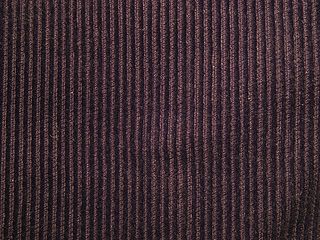
Corduroy is a textile with a distinctively raised "cord" or wale texture. Modern corduroy is most commonly composed of tufted cords, sometimes exhibiting a channel between them. Both velvet and corduroy derive from fustian fabric. Corduroy looks as if it is made from multiple cords laid parallel to each other.

A bathrobe, also known as a housecoat or a dressing gown, is a loose-fitting outer garment worn by people, often after washing the body or around a pool. A bathrobe is considered to be very informal clothing, and is not worn with everyday clothes.

Flocking is the process of depositing many small fiber particles onto a surface. It can also refer to the texture produced by the process, or to any material used primarily for its flocked surface. Flocking of an article can be performed for the purpose of increasing its value. It can also be performed for functional reasons including insulation, slip-or-grip friction, retention of a liquid film, and low reflectivity.

Fustian is a variety of heavy cloth woven from cotton, chiefly prepared for menswear.
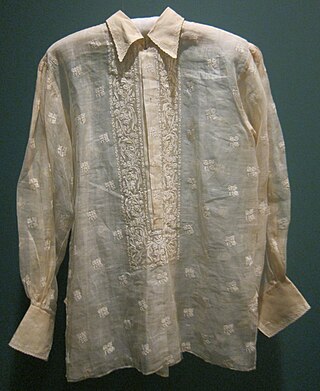
The barong tagalog, more commonly known simply as barong, is an embroidered long-sleeved formal shirt for men and a national dress of the Philippines. Barong tagalog combines elements from both the precolonial native Filipino and colonial Spanish clothing styles. It is traditionally made with sheer textiles (nipis) woven from piña or abacá; although in modern times, cheaper materials like organza silk, ramie or polyester are also used.

A dress shirt, button shirt, button-front, button-front shirt, or button-up shirt is a garment with a collar and a full-length opening at the front, which is fastened using buttons or shirt studs. A button-down or button-down shirt is a dress shirt with a button-down collar – a collar having the ends fastened to the shirt with buttons.

Pile weave is a form of textile created by weaving. This type of fabric is characterized by a pile—a looped or tufted surface that extends above the initial foundation, or 'ground' weave. The pile is formed by supplemental yarn running in the direction of the length of the fabric or the width of the fabric. Pile weaves include velvet and corduroy fabrics and machine-woven Berber carpets.
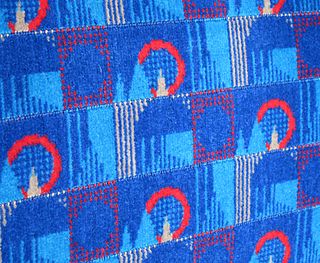
Moquette is a type of woven pile fabric in which cut or uncut threads form a short dense cut or loop pile. The pile's upright fibres form a flexible, durable, non-rigid surface with a distinctive velvet-like feel. Traditional moquette weave fabrics are made today from a wool nylon face with an interwoven cotton backing, and are ideally suited to applications such as public transport.

Kurdish traditional clothing, also known as Kurdish dress, refers to the folk costumes of the Kurdish people. The traditions typically vary across different regions and tribes of Kurdistan, but it has some common elements. Historically, Kurdish clothing was more complex and varied, but it has evolved to a simpler form over time. It is also prominently worn during festivals and special occasions such as Newroz.
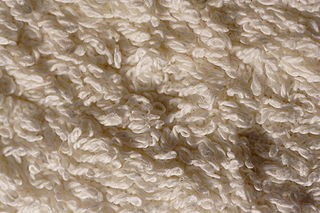
Terrycloth, terry cloth, terry cotton, terry towelling, terry, terry towel, Turkish towelling (formerly), or simply towelling is a fabric woven with many protruding loops of thread which can absorb large amounts of water. It can be manufactured by weaving or knitting. Terrycloth is woven on special looms that have two beams of longitudinal warp through which the filler or weft is fired laterally.
The manufacture of textiles is one of the oldest of human technologies. To make textiles, the first requirement is a source of fiber from which a yarn can be made, primarily by spinning. The yarn is processed by knitting or weaving, which turns it into cloth. The machine used for weaving is the loom. For decoration, the process of colouring yarn or the finished material is dyeing. For more information of the various steps, see textile manufacturing.
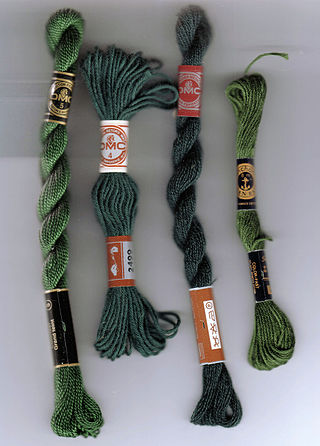
Embroidery thread is yarn that is manufactured or hand-spun specifically for embroidery and other forms of needlework. Embroidery thread often differs widely, coming in many different fiber types, colors and weights.

Aso oke fabric, is a hand-woven cloth that originated from the Yoruba people of Yorubaland within today's Nigeria, Benin and Togo. Usually woven by men and women, the fabric is used to make men's gowns, called agbada and hats, called fila, as well as Yoruba women's wrappers called Iro and a Yoruba women's blouse called Buba and a gown called Komole, as well as an head tie, called gele and so on.

Primarily, nap is the raised (fuzzy) surface on certain kinds of cloth, such as velvet or moleskin. Nap can refer additionally to other surfaces that look like the surface of a napped cloth, such as the surface of a felt or beaver hat.

The jellabiya, also jalabiya, galabeya or jalamia is a loose-fitting, traditional garment from the Nile Valley. Today, it is associated with farmers living in Egypt and comes in rich color varieties. The garment is also worn in Sudan, but has other textures and is usually white, as well as some communities from Eritrea and Ethiopia. The colorful Egyptian style is used by both men and women.
